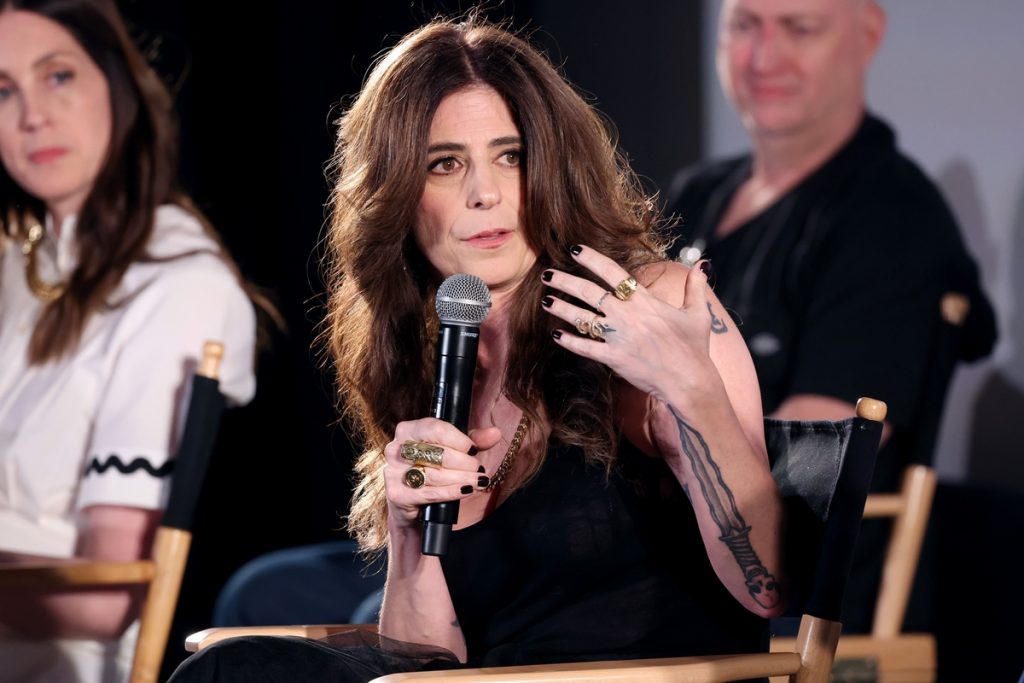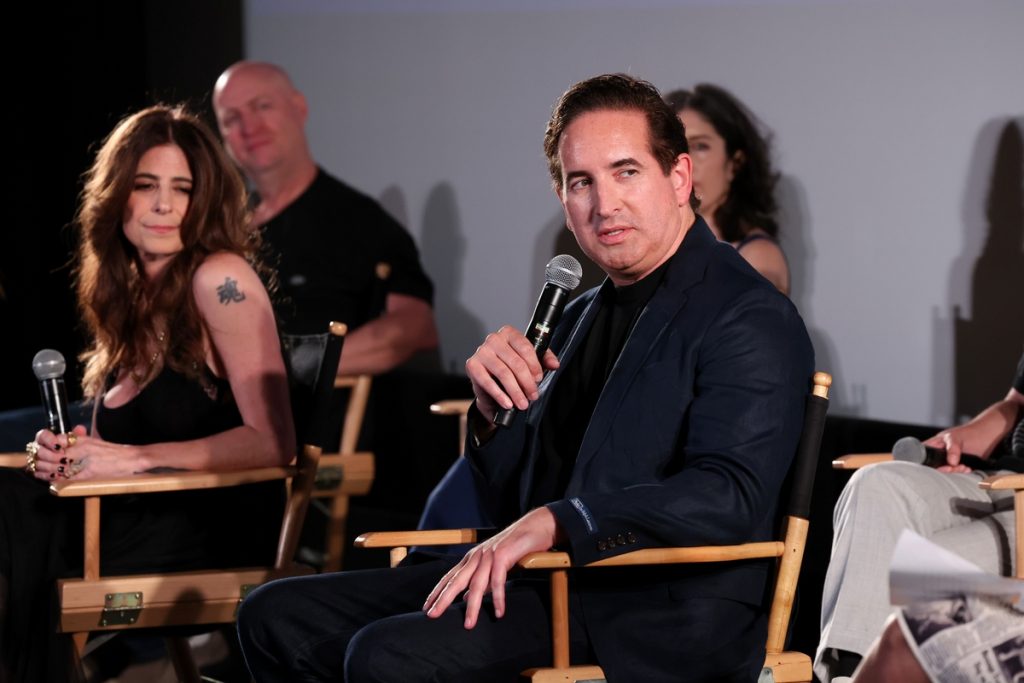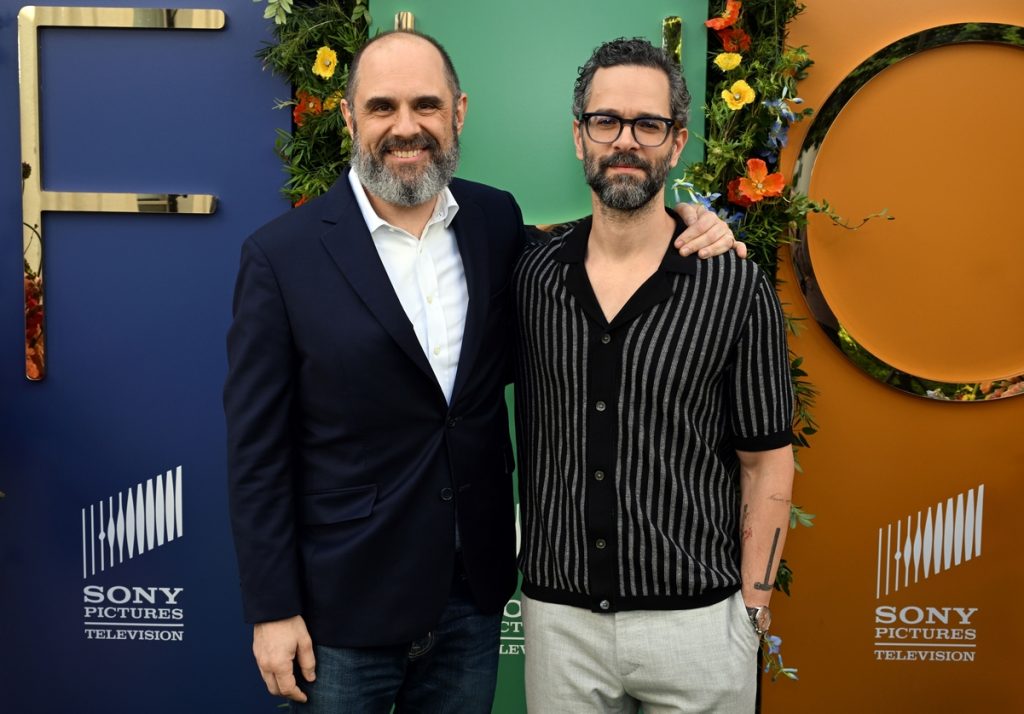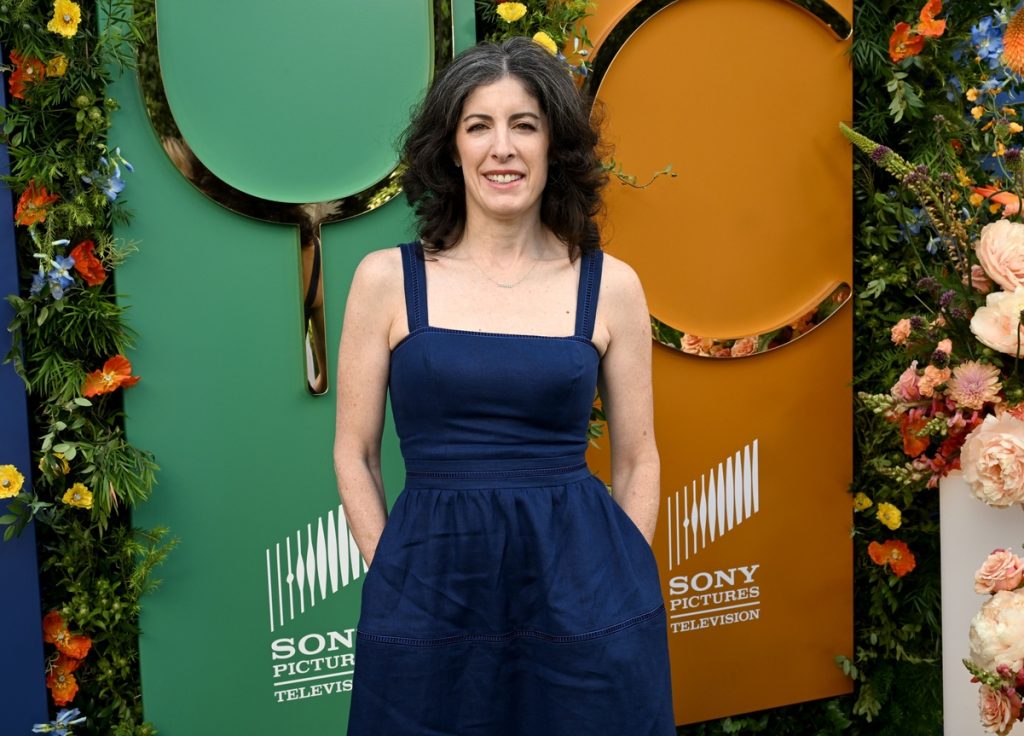What Screenwriters Can Learn About Adaptations From The Creators Of Some Top TV Series From Sony Television

What happens when you put a group of creatives in a room and they discuss adapting source material for television shows? Answer: a highly-informative discussion.
For screenwriters, adapting source material is a uniquely daunting writing task that pits fidelity with originality. It’s about finding that sweet spot of honoring the original while making it work as a refreshed story. When it’s done right, adaptation doesn’t just keep a story alive; it transforms it, often making it even better than the original.
Blake Crouch – Dark Matter
When the Author Becomes the Showrunner
For novelist Blake Crouch, adapting Dark Matter meant more than translating chapters into scenes—it meant revisiting his work with fresh eyes and a second chance at the story.
“It’s both terrifying and exhilarating,” Crouch says. “The book had to cut so much for pacing. The show let me slow down, explore characters and plots more, and even invent new ‘darlings.’”
Originally envisioned as a feature film, Dark Matter eventually took shape as a series—an expansion that gives Crouch freedom to deepen characters, stretch timelines, and invent entire subplots that wouldn’t have fit into a 2-hour runtime.
Use adaptation as your ‘second draft.’
“When you’re adapting your own material, you know it intimately—but that can be both a gift and a trap. Don’t be precious,” Crouch advised. “Give yourself permission to reimagine. What works in prose doesn’t always serve the screen.”

Blake Crouch. Photo by Michael Kovac/ Getty Images for Sony Pictures Television
Liz Moore & Nikki Toscano – Long Bright River
Making the Leap from Novelist to TV Creator
Author Liz Moore described her first foray into television as a crash course in visual storytelling, made possible by her collaboration with veteran showrunner Nikki Toscano.
“It was my first time in a writers’ room,” Moore recalls. “Co-writing let me see the story through a visual lens I hadn’t imagined.”
Toscano’s first question about adapting the book: “What’s sacred and what’s flexible? What are the non-negotiables?’”
In their case, a small but significant change—shifting a grandmother to a grandfather—let the show weave in Philadelphia’s vibrant ‘Mummer culture.’ It wasn’t just symbolic; it allowed them to cast Kensington legend John Doman to ground the story.

Nikki Toscano. Photo by Phillip Faraone/ Getty Images for Sony Pictures Television
Shawn Ryan – The Night Agent
When the Story Outgrows the Source
Netflix’s The Night Agent followed Matthew Quirk’s novel closely in Season 1. Then came the real challenge: creating Season 2 from scratch.
“It was liberating but terrifying,” shares showrunner Shawn Ryan. “If all of Season 1 actually happened, what would these characters logically do next?’”
The answer? Invent boldly. Ryan reshaped the show’s antagonists, turning a lone assassin from the book into a boyfriend-girlfriend hit team. “It added complexity, tension, and texture,” he said. “Even the original author loved it.”
Once you’ve used up the book, you’re not adapting—you’re evolving, construction and continuing. That requires the same character focus and world building that made Season 1 work.

Shawn Ryan. Photo by Phillip Faraone/ Getty Images for Sony Pictures Television
Hayden Schlossberg – Cobra Kai
Nostalgia with Purpose
Adapting an iconic franchise like The Karate Kid is a minefield of fan expectations, but Hayden Schlossberg and his team had a secret weapon: a flipped perspective.
“We started by asking, ‘What happened to the bully from high school?’” Schlossberg says. “Making Johnny the underdog gave us a whole new lens for the show.”
From there, the Cobra Kai team made a rule: no legacy character comes back unless it serves the story. “We didn’t want to shoehorn anyone in for nostalgia. It had to make sense.”
The writers turned to fan-favorite characters, not as decorative Easter eggs, but as tools to deepen theme, challenge expectations, or invert the narrative lens.

Hayden Schlossberg. Photo by Phillip Faraone/ Getty Images for Sony Pictures Television
Craig Mazin & Neil Druckmann – The Last of Us
Adaptation as Interpreting The Emotional Core
HBO’s The Last of Us may be the gold standard in games to television adaptation right now. Co-showrunners Craig Mazin and Neil Druckmann didn’t just translate the video game—they reinterpreted and enriched it.
“We weren’t just transcribing scenes from the game,” Mazin explains. “We were interpreting the material—adding emotional layers and expanding the universe.”
The most talked-about example? Episode 3’s love story between Bill (Nick Offerman) and Frank (Murray Bartlett), which took a minor subplot and expanded it into a deeply moving, stand-alone episode.
Use the visual format to explore emotional side streets the original never had time for. That’s the magic of adaptation—you can dig deeper, widen the lens, or slow down where the source had to rush.

Craig Mazin and Neil Druckmann. Photo by Michael Kovac/ Getty Images for Sony Pictures Television
Maril Davis – Outlander
Emotional Authenticity vs. Plot Fidelity
Few shows deal with as much fan scrutiny as Outlander, based on Diana Gabaldon’s sprawling book series. Producer Maril Davis said the key to managing that pressure is staying emotionally honest to the source.
“You condense the plot, but keep the emotional core,” Davis explains. “Especially with a relationship like Claire and Jamie’s—it’s about evolution, maturity, and resilience.”
The fans may want every scene from the book recreated on the screen—but what they really need is to still feel the love story, no matter how much plot you trim. Audiences will forgive condensed timelines and dropped side plots if the emotional arc remains intact.

Maril Davis. Photo by Michael Kovac/ Getty Images for Sony Pictures Television
When Actors Help Shape the Script
A recurring insight among all the showrunners? Actors are not just performers—they’re co-creators.
Blake Crouch praised Joel Edgerton and Jennifer Connelly for bringing nuance to characters he thought he already understood in Dark Matter. “They bring instincts and ideas you could never plan for—but they make it better.”
Shawn Ryan adds: “Once you know your cast, you start writing to their rhythms. It’s one of the greatest gifts TV gives you.”
Nikki Toscano cited Amanda Seyfried’s work in Long Bright River as elevating the text. “She brought emotion that wasn’t even on the page,” Toscano states. “And some of our best moments came from local Philly actors—even a guy who rewrote a Thanksgiving prayer on set. We kept it in the final cut.”
Hayden Schlossberg said Billy Zabka’s comedic chops molded Cobra Kai: “We started writing to his strengths. It elevated everything.”
Key Tips for Screenwriters:
- Reinterpret, don’t regurgitate, rinse and repeat. Your job isn’t to copy—it’s to translate and transform.
- Know your “sacred.” Decide early what elements are core to the story, and be open to shifting the rest.
- Think in scenes, not summaries. Screen time is precious. Every moment must matter.
- Respect, then surprise. Stay loyal to the original’s emotional spine, but push the form forward.
- Treat continuation as reinvention. If the source runs out, invent with confidence.
- Let the cast reshape the narrative. A strong performance can redefine a character’s arc.
- Use legacy IP with intent. Don’t chase nostalgia—earn it through meaningful story.
Join the Discussion!
Related Articles
Browse our Videos for Sale
[woocommerce_products_carousel_all_in_one template="compact.css" all_items="88" show_only="id" products="" ordering="random" categories="115" tags="" show_title="false" show_description="false" allow_shortcodes="false" show_price="false" show_category="false" show_tags="false" show_add_to_cart_button="false" show_more_button="false" show_more_items_button="false" show_featured_image="true" image_source="thumbnail" image_height="100" image_width="100" items_to_show_mobiles="3" items_to_show_tablets="6" items_to_show="6" slide_by="1" margin="0" loop="true" stop_on_hover="true" auto_play="true" auto_play_timeout="1200" auto_play_speed="1600" nav="false" nav_speed="800" dots="false" dots_speed="800" lazy_load="false" mouse_drag="true" mouse_wheel="true" touch_drag="true" easing="linear" auto_height="true"]










You must be logged in to post a comment Login